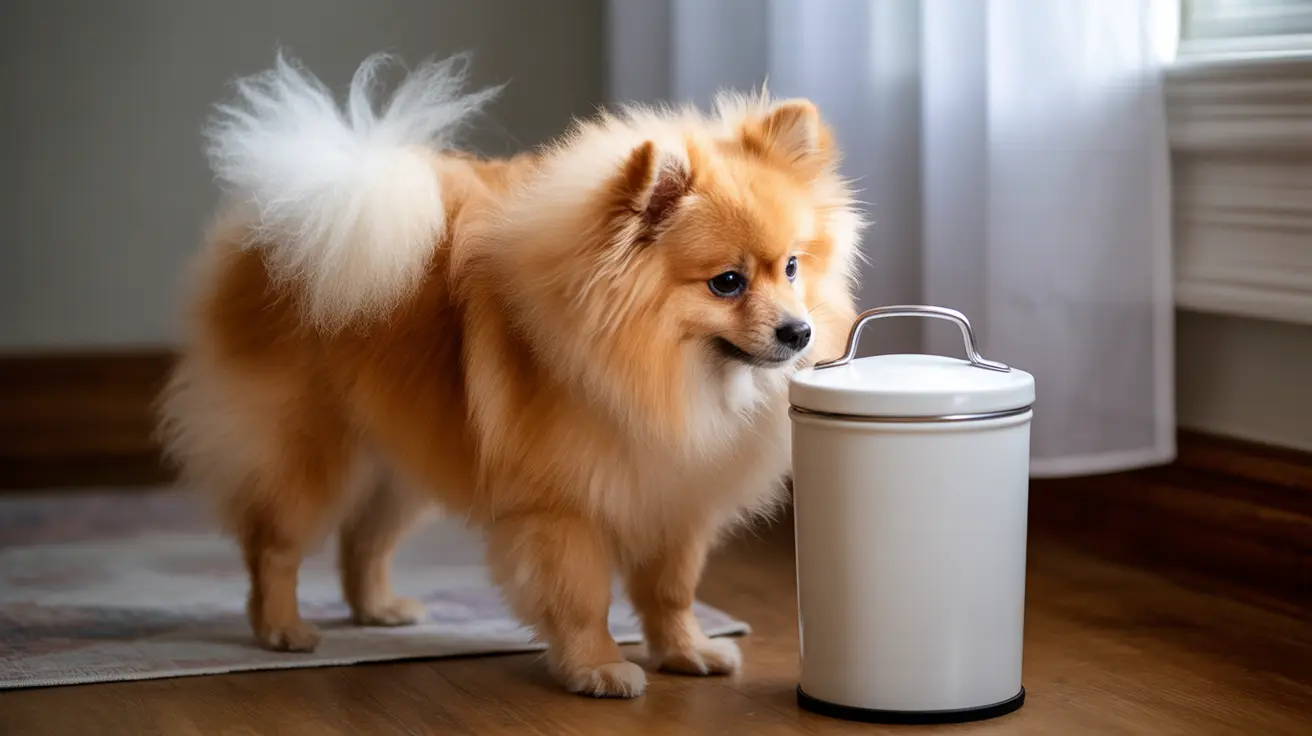Many dog owners are alarmed to discover their pet has eaten a tampon, a situation that requires immediate attention. This concerning behavior, while distressing, is actually quite common due to dogs' natural instincts and powerful sense of smell. Understanding why dogs are attracted to these products and knowing how to prevent access to them is crucial for your pet's safety.
In this comprehensive guide, we'll explore the reasons behind this behavior, discuss the serious health risks involved, and provide practical prevention strategies to keep your four-legged friend safe.
Understanding Your Dog's Attraction to Tampons
Dogs are naturally drawn to tampons for several biological and behavioral reasons:
Powerful Scent Detection
Dogs possess an incredibly sophisticated sense of smell that's thousands of times more powerful than humans. This heightened olfactory ability makes them particularly attracted to objects containing strong biological scents, including used feminine hygiene products.
Natural Scavenging Instincts
Despite domestication, dogs retain their ancestral scavenging instincts. These instincts drive them to investigate and potentially consume items with strong organic odors, including bathroom waste.
Health Risks and Dangers
Immediate Physical Risks
Tampon ingestion can lead to several serious health complications:
- Intestinal blockage
- Choking hazards
- Internal tears and lacerations
- Severe dehydration
- Potential toxic exposure
Long-term Complications
Without prompt medical attention, swallowed tampons can cause life-threatening conditions. The absorbent nature of tampons means they can expand significantly inside your dog's digestive system, potentially requiring emergency surgery.
Emergency Response Protocol
Immediate Actions
If you discover or suspect your dog has eaten a tampon:
- Don't induce vomiting without veterinary guidance
- Contact your veterinarian immediately
- Monitor your dog's behavior and symptoms
- Be prepared to describe when and what was ingested
Prevention Strategies
Secure Storage Solutions
Implement these practical prevention measures:
- Use covered trash bins with secure lids
- Keep bathroom doors closed
- Install childproof locks on cabinets
- Dispose of products properly in sealed containers
Environmental Management
Create a safer environment by:
- Maintaining regular exercise routines to prevent boredom
- Providing appropriate chew toys
- Supervising your dog during bathroom access
- Installing baby gates when necessary
Frequently Asked Questions
Why does my dog eat tampons and what attracts them to these products?
Dogs are attracted to tampons due to their extremely sensitive sense of smell and natural scavenging instincts. The presence of biological scents, especially in used products, can be particularly appealing to them.
What are the health risks if my dog eats a used or unused tampon?
Major health risks include intestinal blockage, choking, internal injuries, and severe dehydration. Unused tampons can be particularly dangerous as they expand significantly when exposed to moisture.
What signs should I watch for if my dog has swallowed a tampon?
Watch for vomiting, lethargy, loss of appetite, difficulty defecating, abdominal pain, and changes in behavior. Any of these symptoms requires immediate veterinary attention.
What should I do immediately if my dog eats a tampon or starts choking on one?
Contact your veterinarian immediately. Don't attempt to induce vomiting without professional guidance, as this could cause additional complications.
How can I prevent my dog from accessing and eating tampons at home?
Use secure, covered trash bins, keep bathroom doors closed, and ensure proper disposal of feminine hygiene products. Maintain regular exercise and enrichment activities to prevent boredom-related scavenging.
Remember, prevention is always better than treatment. By understanding why dogs eat tampons and implementing proper safety measures, you can protect your pet from this dangerous behavior. If an incident occurs, don't hesitate to seek immediate veterinary care – it could save your dog's life.






